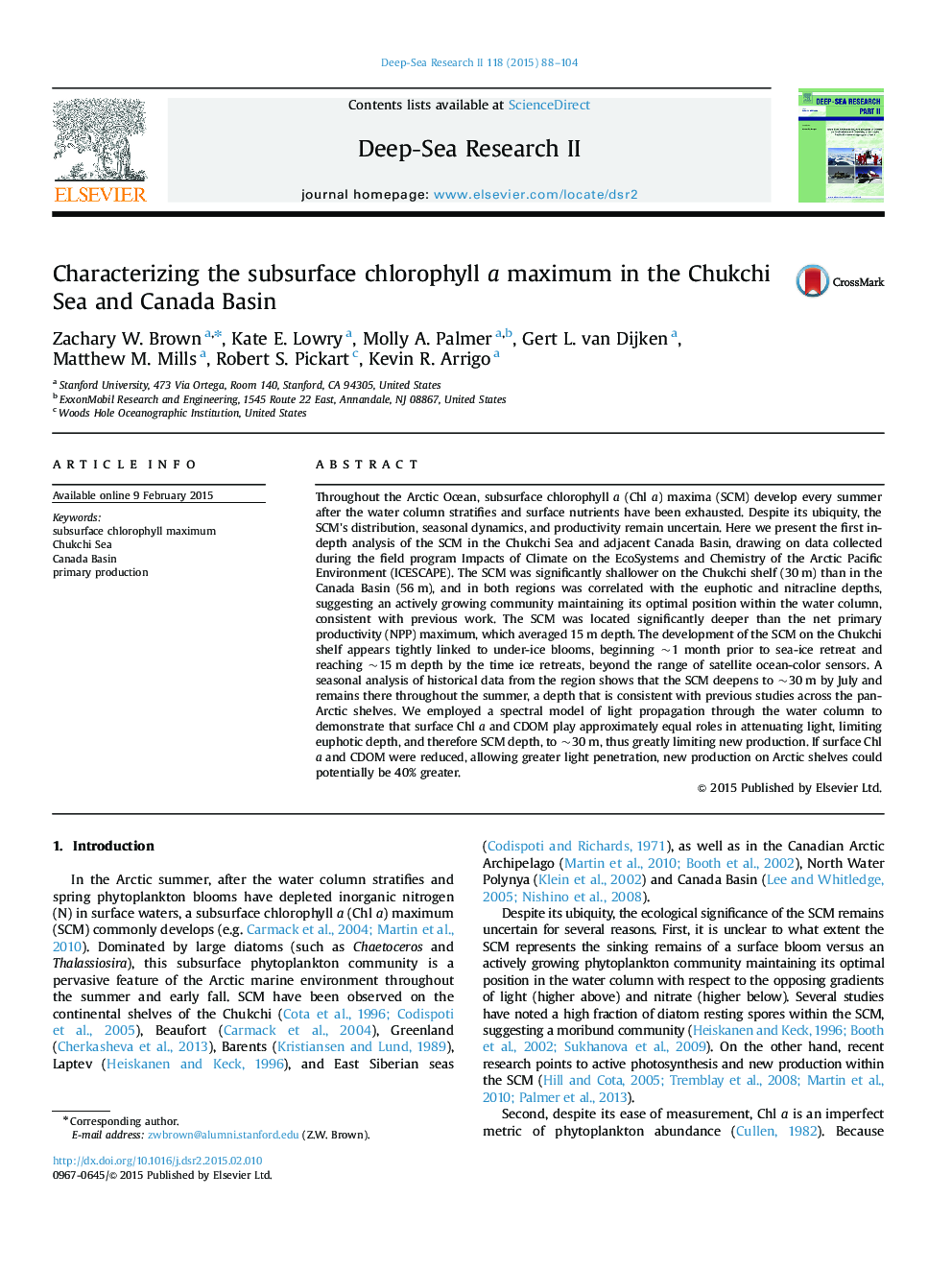| کد مقاله | کد نشریه | سال انتشار | مقاله انگلیسی | نسخه تمام متن |
|---|---|---|---|---|
| 6384058 | 1326297 | 2015 | 17 صفحه PDF | دانلود رایگان |
عنوان انگلیسی مقاله ISI
Characterizing the subsurface chlorophyll a maximum in the Chukchi Sea and Canada Basin
ترجمه فارسی عنوان
مشخص کردن کلروفیل زیر سطحی حداکثر در دریای چوکچوی و حوضه کانادا
دانلود مقاله + سفارش ترجمه
دانلود مقاله ISI انگلیسی
رایگان برای ایرانیان
کلمات کلیدی
حداکثر کلروفیل زیر سطح دریای چوکچای، حوضه کانادا، محصول اولیه،
موضوعات مرتبط
مهندسی و علوم پایه
علوم زمین و سیارات
زمین شناسی
چکیده انگلیسی
Throughout the Arctic Ocean, subsurface chlorophyll a (Chl a) maxima (SCM) develop every summer after the water column stratifies and surface nutrients have been exhausted. Despite its ubiquity, the SCM׳s distribution, seasonal dynamics, and productivity remain uncertain. Here we present the first in-depth analysis of the SCM in the Chukchi Sea and adjacent Canada Basin, drawing on data collected during the field program Impacts of Climate on the EcoSystems and Chemistry of the Arctic Pacific Environment (ICESCAPE). The SCM was significantly shallower on the Chukchi shelf (30 m) than in the Canada Basin (56 m), and in both regions was correlated with the euphotic and nitracline depths, suggesting an actively growing community maintaining its optimal position within the water column, consistent with previous work. The SCM was located significantly deeper than the net primary productivity (NPP) maximum, which averaged 15 m depth. The development of the SCM on the Chukchi shelf appears tightly linked to under-ice blooms, beginning ~1 month prior to sea-ice retreat and reaching ~15 m depth by the time ice retreats, beyond the range of satellite ocean-color sensors. A seasonal analysis of historical data from the region shows that the SCM deepens to ~30 m by July and remains there throughout the summer, a depth that is consistent with previous studies across the pan-Arctic shelves. We employed a spectral model of light propagation through the water column to demonstrate that surface Chl a and CDOM play approximately equal roles in attenuating light, limiting euphotic depth, and therefore SCM depth, to ~30 m, thus greatly limiting new production. If surface Chl a and CDOM were reduced, allowing greater light penetration, new production on Arctic shelves could potentially be 40% greater.
ناشر
Database: Elsevier - ScienceDirect (ساینس دایرکت)
Journal: Deep Sea Research Part II: Topical Studies in Oceanography - Volume 118, Part A, August 2015, Pages 88-104
Journal: Deep Sea Research Part II: Topical Studies in Oceanography - Volume 118, Part A, August 2015, Pages 88-104
نویسندگان
Zachary W. Brown, Kate E. Lowry, Molly A. Palmer, Gert L. van Dijken, Matthew M. Mills, Robert S. Pickart, Kevin R. Arrigo,
